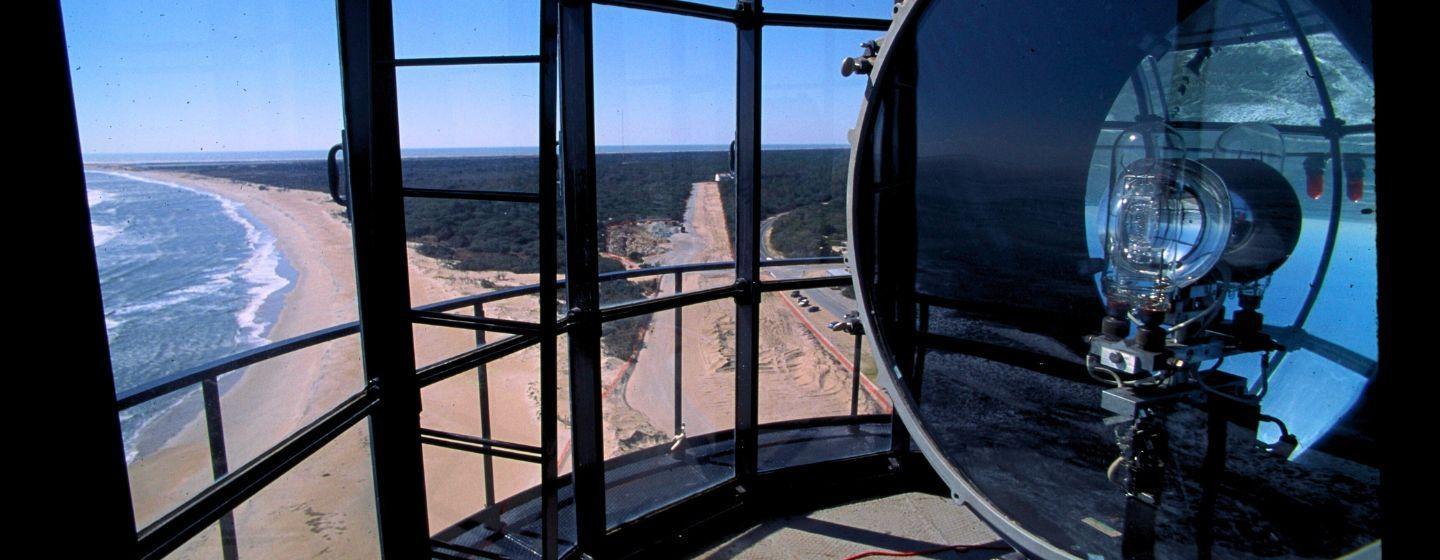The Cape Hatteras Lighthouse Gets Some Much-Needed TLC


After more than a century and a half of protecting seafarers and braving the elements, it’s time for a North Carolina landmark to get a little love.
The iconic Cape Hatteras Lighthouse is undergoing an 18-month, $19.2 million restoration project. Paths will be built on the lighthouse grounds so visitors can explore the site. Exhibit panels will describe the lighthouse’s history and its vital role on the coast. The lighthouse itself, now wrapped in scaffolding, is currently closed for climbing, but the National Park Service hopes it will reopen in summer 2026.
Designed and built between 1868 and 1870, the building is the tallest traditional lighthouse in the U.S. The structure is listed on the National Register of Historic Places and was named a National Historic Landmark in 1998.
You know what’s even more amazing? In 1999, the entire structure and its associated buildings were moved to a new site 2,900 feet (about twice the height of the Empire State Building) inland to protect them from coastal erosion.
However, repairs are desperately needed due to its location on a barrier island and its exposure to high winds, intense sunlight and salt air.
“After a lengthy and thoughtful planning process, we are excited to take this significant step towards preserving an iconic historic landmark,” said David Hallac, National Parks of Eastern North Carolina superintendent, in a statement. “We thank our visitors for their patience and understanding as the Cape Hatteras Lighthouse and its surrounding landscape are restored and enhanced over the next couple of years.”
The items to be addressed were identified in a 2014 comprehensive condition assessment report and then in a 2016 historic structure report. However, as initial work on paint removal began and the interior and exterior of the lighthouse could be closely examined, new issues came to light.
An almost seven-story continuous and jagged crack was discovered. Officials believe it was caused by a lightning strike in 1890. Additional discoveries have included sections of missing mortar between bricks and small gaps between interior windows where metal has rusted away.
Essentially, the to-do list is long.
The project will include repairs to metal components, windows and marble flooring as well as deteriorated masonry. An estimated 40,000 bricks—about 15% of all bricks in the lighthouse—will be replaced. The gables over windows and missing interior doors will also be restored. And of course, the lighthouse’s interior and famous black-and white stripes will be repainted.
As for the beacon itself, a replica first-order Fresnel lens will be custom made and installed. During the renovation, a temporary beacon will be installed on the exterior of the lighthouse. This means the lighthouse will go dark twice during the project: once to install the temporary beacon and again when the new light is ready to be installed.
“When this lighthouse project is done, the lighthouse will be in better shape than it has been since it was built in 1870,” said Hallac at the project’s groundbreaking in February 2024. “It will be more resilient—perhaps even [more so than] when it was initially built, because of some of the building materials that we are using will be much more resilient to the salt air and strong winds in the environment.”
The National Park Service says the goal of the project is to preserve the lighthouse and provide a better visitor experience. The hope is that people will better appreciate the lighthouse’s beauty and understand why it was built as well as its role along the North Carolina coast.